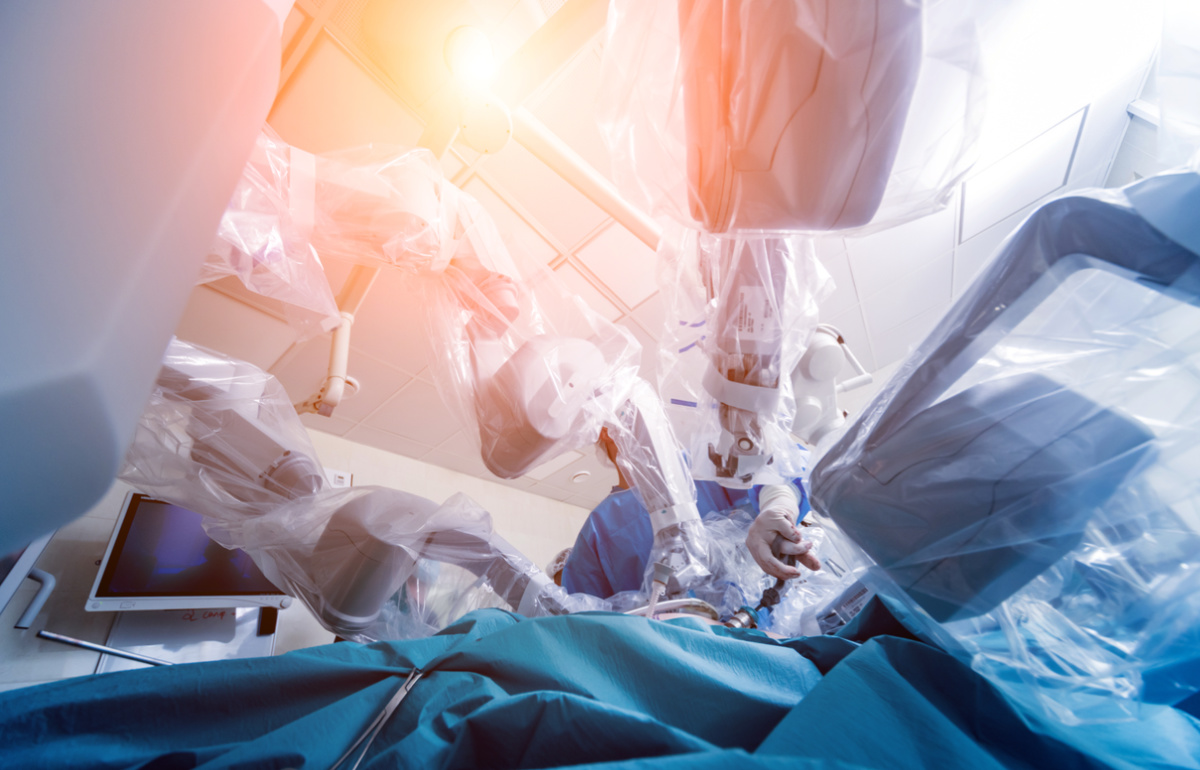What Is Robotic Surgery? What To Expect as a Patient
When exploring your options for surgery, the least invasive procedure is generally the most recommended. Today, minimally invasive robotic surgery is a choice for several surgical treatments, but what is robotic surgery? Consider this guide to critical information about who can have a robot-assisted procedure, the benefits and risks of receiving it, and what you should expect as a patient.
What Is Robotic Surgery and How Does It Work?
Robotic or robot-assisted surgery is a blanket term for surgical procedures performed using small instruments mounted onto robotic arms controlled by the surgeon. When Joseph Rosen and Richard Satava developed the first robotic surgery system prototype, they took the first steps in making many major open surgeries less invasive.
The robot system consists of a pair of robotic arms with different functions and a console for monitoring. The surgeon makes strategically placed tiny incisions in the patient through which to insert the arms. One arm controls a high-definition 3-D camera used to monitor the situation internally, and the others contain the surgical instruments necessary to conduct the surgery.
During a procedure, your surgeon controls the arms from the console next to the table, effectively using them as an extension of their own hands. Other surgical team members assist and monitor the operation on a screen connected to the camera.
What Is Robotic Surgery Used for?
Robotic surgery technology has advanced substantially since the 1990s when the first doctors began to use it. Today, surgeons can perform a number of different types of major and minor surgery using state-of-the-art robotic systems:
- Colon surgery: Doctors can partially or entirely remove the colon for a colectomy to treat polyps or cancers.
- Robotic hernia repair surgery: They can repair a tear or bulge in a fascia or muscle with minimal invasiveness.
- Stomach cancer surgery: A standard treatment for stomach cancer is a laparoscopic gastrectomy, which uses robotics to remove part or all of the stomach.
- GERD surgery: Doctors can treat gastroesophageal reflux disease through a surgery called Robotic Nissen Fundoplication.
- Spleen removal surgery: A splenectomy is when doctors remove a diseased or malfunctioning spleen.
This list is not comprehensive. For example, doctors can perform a pancreatectomy to remove all or parts of the pancreas to treat cancer or pancreatitis. Other common general surgery procedures performed with a robotic surgery system include appendectomy, the removal of the appendix, and cholecystectomy, an operation to remove the gallbladder.
What Are the Benefits of Robotic Surgery?
Robotic surgery has many advantages for both the surgical team and the patient. With an increased range of motion and greater agility, the surgeon can perform with more precision, decreasing the risk of mistakes. Additionally, the robotic system allows doctors to access areas in the body that they could not reach through open surgery, producing a clearer field of vision and minimizing disruption in the area. The camera arm provides a high-resolution, magnified image of the operating field, allowing the doctor to zoom in for a closer look when necessary.
For the patient, the benefits of robotic surgery make it preferable to open surgery in most cases when it is an option:
- Smaller incisions lower the risk of post-surgery infection.
- The significant reduction in blood loss means robotic surgeries require fewer blood transfusions.
- Patients spend less post-operation time in the hospital.
- Patients typically can return to their lives and work routines sooner due to faster recovery times.
Even patients requiring major surgeries experience a higher success rate and faster recovery with a robotic system The range of robot-assisted surgical capabilities makes it a priority for most doctors and patients. Still, as with any surgery or medical procedure, no patient should enter without understanding the potential risks.
What Are the Potential Risks?
The risks associated with robot-assisted surgery can vary based on a number of factors, including the doctor’s skill level and the type of surgery necessary. For example, the risks of heart surgery are significantly higher than the risks of gallbladder removal surgery. However, with any procedure that requires anesthesia and incisions, your doctor should address all potential risks with you and weigh them against the benefits of going through with the surgery.
Decreasing risks
What is robotic surgery now compared to a decade ago? The technology for this equipment has evolved exponentially since early development. Updates have created faster and more reliable data connections between the surgeon’s console and the operating robot, reducing the number of issues associated with precision control. Additionally, doctors and facilities specializing in robotic surgery have developed comprehensive plans to address common issues occurring over the history of robotic surgery usage.
Is Robotic Surgery Painful?
Patients overwhelmingly report less pain following robotic surgery as opposed to more invasive open surgery procedures. Every case is unique, but there are several ways a minimally invasive surgery with robotic instrumentation may reduce pain:
- Smaller incisions are less painful than the larger incisions associated with standard open surgery.
- The smaller robotic arms cause less disturbance to the surrounding tissue.
- The ability to magnify the console image allows the doctor to see the blood vessels more clearly and reduce bleeding, which also reduces pain and healing time.
Additionally, because patients experience less pain after surgery, they are able to move around more during post-op recovery. More movement can reduce the risk of blood clots and help speed up recovery in many cases.
Is Robotic Surgery Right for Everyone?
Robot-assisted procedures are not always the best option for every condition requiring surgical intervention. Researching surgery options is beneficial, but you should also talk with your doctor about the advantages and disadvantages as it applies to your specific case.
Where Can You Get Robotic Surgery?
Now that you understand the risks and benefits of minimizing the invasiveness of a surgical procedure, you can have more informed conversations with your medical team and make decisions about your treatment. To learn more about what robotic surgery is and whether it is a viable option for you, contact Arizona Premier Surgery to schedule your first appointment.
Sources:
https://www.mayoclinic.org/tests-procedures/robotic-surgery/about/pac-20394974
https://www.uclahealth.org/medical-services/robotic-surgery/what-robotic-surgery
https://my.clevelandclinic.org/health/treatments/22178-robotic-
https://my.clevelandclinic.org/health/treatments/21614-gallbladder-removal




